- Home
- Bill Bryson
Icons of England Page 3
Icons of England Read online
Page 3
WHERE THE RIVER MEETS THE SEA
Joan Bakewell
on estuaries
AN ESTUARY IS AN awesome thing, its great bulk of fresh water pressing forward remorselessly into the measureless ocean. It is a striking sight in all weathers – the Severn Estuary below Bristol with its rippling bore; the Mersey’s quiet emergence into Liverpool Bay. But the one I really love is the gentle winding of the river Alde towards the North Sea at Aldeburgh.
Suffolk is a place admired for its vast skyscapes rather than its landscapes. The clouds scud and gather over reedy marshes and heathland – you can see the weather coming from far away and there’s always time to run for cover. And a scattering of ancient spires indicates this was once a thriving centre of the wool trade. For me, however, a Suffolk scene wouldn’t be as compelling without the meandering river, and the wild, unrelenting coastline with its fishermen’s huts and encroaching tides.
Following the river Alde’s twists and turns is like watching a drama unfold. Much of the Aldeburgh Music Festival takes place along its banks in a converted maltings a complex of red-brick buildings sitting low in the landscape, whose steeped roofs are scarcely visible above the lie of the land. Below it, the river winds its way towards the desolate North Sea, always battling against its swaying reedbeds. On a summer evening, as the birds swoop and call above the water, it is easy to sit back, look out at the ancient Iken church alone on the horizon, and feel part of the action.
As the Alde widens its banks, the drama continues. A scattering of pine trees shed their cones on its sandy shores. At Aldeburgh itself – a one-street town whose coloured houses line the coast – the estuary turns south past a modest yacht club and finds its way to Orford, with its pretty harbour where Britten’s Peter Grimes set his boats out to sea. It is hard for me to stroll along its pebble beach without hearing the opera’s interludes playing in my head.
Beyond the harbour lies a sea quite unlike the Alde’s meandering waterway. There is nothing gentle about this coast. The winds and tides can lash hard and the encroaching seas threaten nearby settlements. Some have already surrendered to its waves – they say further north at Dunwich you can hear the drowned church bells tolling beneath the sea. It is a place to watch distant container ships ply the world’s trade and to hear the startled sounds of a beach-goer, who has ventured bravely beyond the family windbreak to test the cold water.
Of course, the Alde’s days have not always been innocent. In the last wars, for example, they chose the desolate Shingle Street for military experiments. Today, oystercatchers haunt the place and visitors with binoculars come in small boats to take a look – though there isn’t much to see. Change happens, history is washed away, but the Alde – with a life of its own – continues its journey to the open sea. And it is this timelessness that I believe gives the estuary its charm.
TIME TO STAND AND STARE
Muhammad Abdul Bari
on Land’s End
WHEN I READ CHAPTER 31, verse 10 of the Qur’an: ‘He created the heavens without any pillars … He placed mountains in the earth as pegs lest it should shake with you … He dispersed all kinds of animals … and sent down water from the sky causing beautiful plants to grow on it,’ I think of the world’s most breathtaking beauty. I think of the rural Bangladeshi village fifty miles north of the capital, where I grew up. I remain fascinated by the pristine paddy fields in the summer and the golden glow of mustard flowers in the winter. I think of the endless blue sky and the thundering clatter of monsoon rain that captivated my childhood. And I think of the year I first came to Britain and fell in love with rural England.
My career in the Bangladesh Air Force brought me to Britain for about a year in the late 1970s to train with the RAF College Cranwell, in Lincolnshire. And when I later came back to Britain to study for a PhD in physics, I always enjoyed taking my family out of London to explore the country’s rural areas. My love of beautiful mountains and open seas took us to many coastal locations. But nothing fascinated me more than Land’s End – the tip of England in the mighty Atlantic Ocean.
Situated about ten miles from Penzance in Cornwall, Land’s End is magnificent. Even with the vast ocean on three sides, it still manages to make its mark – rather than engulfing it, the giant Atlantic has taken it in its lap. Its granite cliffs are fascinating, but dangerous. And although you cannot see what lies beyond the horizon, on a clear day you can just about make out the Isles of Scilly – a cluster of small, lovely islands – and Longships Lighthouse. When the summer sunshine beams down on the water and the mild wind blows inland from the ocean, there’s nowhere I’d rather be.
The first time I stood up on the tip of the hill in front of this endless expanse of water, it rendered me speechless. I was struck by how the power of the ocean and the strength of the cliffs can reduce you to a mere spectator of nature – a tiny observer of the cosmos. It is a place that takes you momentarily away from the constraints of life and makes you question the futility of your existence. Even the seabirds seem more worthy in this magical environment. Visitors come here to get away from it all, but it’s a place where I feel you can learn more about yourself as you stare out across the ocean. You may be small in comparison, but it is here – where daily life is surrendered to the elements – that you can really find yourself.
For many intrepid walkers keen to explore the Cornish coastal path, this end of our land marks the beginning of a journey – the gateway to other places of outstanding beauty. Those who take to the neighbouring cliffs will join the longest continuous footpath in Britain, covering the coast from Poole Harbour through Dorset to Somerset and the Bristol Channel – and passing wonderful locations such as Sennen Cove to the north. It is a romantic and truly delightful path of discovery.
I wish everyone – especially young Muslim people from inner cities – could experience such unrivalled beauty. It is a beauty that would, no doubt, enable them to strike their roots more firmly in this soil.
SIGHTING THE STUBBLE-STAG
Simon Barnes
on hares
I WAS ON A horse, the best kind of hide; make use of one and at a stroke, you are an honorary quadruped. As a result, the rabbit didn’t break cover till I was right on top of him. And then it changed. Transfigured. Metamorphosed before my eyes.
It is one of the countryside’s loveliest conjuring tricks. The rabbit rose on four hydraulic rams and became an antelope. Instead of going hoppity-hop, he shifted into an unsparing Serengeti gallop, back level, head still, mighty levers pounding the ground at bewildering speed, in sight for long seconds across the just-harvested field.
The stubble-stag, the stook-deer, the stag sprouting a suede horse, the creature living in the corn … this from The Names of the Hare, as translated from the Middle English by Seamus Heaney, for a hare it was, all right. It is hard to vanish in Suffolk; the place has too much sky, so the hare has speed instead. He was in sight, but out of reach, and getting more out of reach at a steady forty-five mph. About twice the speed of Usain Bolt. A hare was once seen jumping a Grand National fence.
The Easter bunny is a hare, for it was believed that hares laid eggs in open fields. Well, when the stook-deer takes off at the speed of light and you find a lapwing’s nest in the place he has vanished from, what’s a chap to think? Bugs Bunny is a hare too. American jackrabbits are a species of hare: they produce good-to-go babies above the ground, instead of blind, naked mewlings in a hole.
There were once four million hares in this country, there are now about 80,000. About half of them live in Suffolk, Norfolk and Cambridgeshire, they prefer the dry side of the country. Under the government-sponsored Biodiversity Action Plan, the population of hares was supposed to double by 2010. It hasn’t.
Hares are too scarce, but they still fire the English imagination. People sculpt them and paint them obsessively. Many people – often those who have never seen a real one – claim hares as their favourite animals. Hares are seldom seen, but a single sighting goes v
ery deep. And in part, at least, that comes from this ability to metamorphose. That transition from being an overlooked rabbit to a hare you can’t take your eyes from, is one of the wild world’s routine pieces of magic.
Other transmutations, other metamorphoses: the swift that is suddenly uncommonly large, becoming a hobby, the most elegant falcon in creation … the group of cliff-edge tumbling jackdaws that, in an instant, acquire fire-red beaks and become choughs … the white butterfly that acquires a miraculous glow and becomes the year’s first male orange-tip.
And then there is the thicket that suddenly explodes with the song of nightingale, the bracken frond that shifts uncannily and becomes an adder, or the patch of sea that turns into a Brobdingnagian hat and produces not a rabbit, or even a hare, but a school of dolphins. At a stroke your perception of the world changes, the world itself changes.
The world makes a transition from ordinary to special; from mundane to marvellous; from commonplace to miraculous. We are often told that there are marvels all around us: how very nice it is when a hare takes the trouble to show us.
‘SUMMER IS ICUMEN IN’
Laura Barton
on a traditional English round
THE THING I HAVE always loved about England is its wildness, its unbridled vigour and fire and ruggedness, it is there in our language and our landscape, our manner and our music. And if there’s a song that embodies this national spirit I have always believed it to be ‘Summer Is Icumen In’. A traditional English round, thought to date from around 1260, its thirteen lines are written in Middle English, more particularly the Wessex dialect. It begins with a resounding shout: ‘Summer has come in,/Loudly sing, cuckoo!’ it declares. ‘The seed grows and the meadow blooms/And the wood springs anew,/Sing, cuckoo!’
Sometimes known as the Reading Rota, it hails from the Reading Abbey manuscript, though its author is unknown. Speculation, nonetheless, has placed it at the feet of W. de Wycombe, an English composer of the period, best known for his polyphonic alleluias. ‘Summer Is Icumen In’ is one of the earliest instances of counterpoint and also one of the first examples of a piece of music with both religious and secular lyrics — though the sacred version, in Latin, concerns the Crucifixion rather than the arrival of the summer and the song of the cuckoo. The piece is written for four voices, joined at the interchanges by two deeper voices, and its melody is both one of the oldest-known illustrations of the major mode and the oldest example of ground-bass — though such terminology communicates very little of the song’s vibrancy, its light-footed joy.
Its subject is springtime and the great unfurling ecstasy of the English countryside in that season, a time when, as the song puts it, ‘The ewe bleats after the lamb/The cow lows after the calf./The bullock stirs, the stag farts.’ There is a real lusty fervour to ‘Summer Is Icumen In’, and it is this quality that has always made me think that this song seems a glorious precursor to rock ’n’ roll — they are both, after all, concerned with sex and noise and the sheer joy of being alive.
That it is sung in the round brings a glorious tumbling quality to these lyrics, a sound that mimics the delights of the season here in England, when the fierce green buds unwind and spread, the hedgerows spill over, and the frozen stream thaws and begins its chuckling run. When all is noise and bluster and fluttering, and the birds swoop low and call out their own tunes over and over – ‘Merrily sing, cuckoo!’ as the song holds it, ‘Cuckoo, cuckoo, well you sing, cuckoo.’ It is in this celebration of new life returning, and the infinite structure of the round, that ‘Summer Is Icumen In’ instills its message. Life will always begin once more, it seems to say. It is an endless round, and the song will always play on: ‘Don’t you ever stop now,’ it runs. ‘Sing, cuckoo, now. Sing, cuckoo./Sing, cuckoo. Sing, cuckoo, now!’
THROUGH THE LYCHGATE
Sister Wendy Beckett
on country churchyards
OPEN THE LYCHGATE AND walk up the path to the church door. Almost certainly, you will find it locked. But all around the church is another sacred space, the churchyard where all who have prayed within the walls of this church, over the centuries, have been laid to rest.
This is consecrated ground, as holy in its own way as the church itself. Listen to its peace. The dark bulk of yew trees protects it, and a churchyard seems to have a silence uniquely its own. It is not a garden, with flower beds, but a yard, and the only flowers are wild flowers in the corners, and a few that are heaped on recent graves. There will be a mowing rota for the parish, and the grass rolls smoothly over the unevenness that covers the unmarked graves.
Tombstones stand in lines, or are dotted haphazardly, some erect, some leaning, but most of the villagers would not have been able to afford such a thing. When they were first laid in this blessed soil, back in the fourteenth, fifteenth, sixteenth centuries, they would have been marked by a small wooden cross which has long ago crumbled to dust. Even those who were marked by a gravestone are mostly no longer identifiable. The words so lovingly chiselled can no longer be read. Water and wind have eroded them, and there is a marvellous array of lichens decorating the stone. This is an unpolluted place, and so there are more rare mosses and lichens in churchyards such as this than anywhere else in the country. It is unpolluted in every sense, a silent, gentle place where all those who have prayed in the church, longed and doubted, rejoiced and feared, now rest bodily ‘in sure and certain hope of the Resurrection’.
The lychgate through which we entered has a small roof to it. ‘Lych’ is the Anglo-Saxon word for corpse, and here the villagers would bring the body, resting it at the gate while the priest came from the church to accompany it to the grave. Medieval dead had no coffins, merely winding sheets, and there was a much greater physical intimacy with the dead than we know in our more sanitized and impersonal day.
There was also a much greater certainty that the corpse was merely the less important bodily aspect of the beloved relative or friend who was being buried. Something of this long-sustained faith seems to have imbued the churchyard. When Thomas Gray wrote his famous poem, ‘Elegy Written in a Country Churchyard’ his interest was almost wholly in the men (he mentions no women) whom he describes as ‘the rude forefathers of the hamlet’. He makes no mention of faith. It is their lives of what he describes as ‘useful toil’ and ‘homely joys’ that interest him: ‘the short and simple annals of the poor’.
From meditating on the necessary end of all lives, whether simple or splendid, Gray moves, in typical eighteenth-century fashion, to meditating upon himself. He imagines that he will die young and obscure (both suppositions happily mistaken), and produces his own epitaph. There are, it is true, countless unknown stories of the people who lie buried here, but imagining their lives or brooding on their deaths seems a rather overactive preoccupation for a quiet time standing beneath the ‘yew tree’s shade’. There is a benison in the very stillness of the churchyard, but we must be still ourselves, with quiet minds, to receive it.
GHOST ORCHIDS
Antony Beevor
on the world of Jocelyn Brooke
WE LIVE RIGHT IN the heart of Jocelyn Brooke’s country, south-east of Canterbury, a comparatively small area of chalk downland between the Elham and Pett valleys. Brooke, a botanist specializing in orchids who became an acclaimed novelist, lived at Bishopsbourne, less than three miles away.
Brooke worked for years on The Wild Orchids of Britain (finally published in 1952), but he only began to achieve recognition after the war, when he merged his botanical interests with lyrical, semi-fictional memories of childhood. Anthony Powell, one of his greatest admirers, was taken by his Proustian approach to nostalgia. Brooke’s novels also contained a strong homoerotic subtext, which terrified his publishers in that repressive age. This was frequently expressed in his loving descriptions of the rare orchids, such as the lizard, monkey and bee orchids, which he sought on his long rambles. He was fascinated by the phallic military orchid, which became the title of his first published novel.
Brooke’s love affair with a soldier from the Seaforth Highlanders, based near Dover, is conveyed in this book in a vivid but veiled prose.
Other orchids, like the large white lady orchid, appear from time to time in our wood and fields. One year, we even had ten at once. But apart from common spotted and pyramidal orchids, many varieties have decreased. This is largely due to the gradual change from traditional sheep-grazing to horse paddocks, as the countryside switches from agriculture to ‘leisure activities’, or what the Italians call agri-turismo. Sadly, the marked increase in the number of horses on bridleways and in fields has led to a noticeable reduction of the orchid population.
Brooke would certainly regret that decline, yet these downlands and valleys have changed astonishingly little, mainly because the roads are so narrow and villages of any size so far apart. This has prevented the area from becoming commuter land, even with the great increase in the size of our two nearest towns, Ashford and Canterbury. Those high-banked, close-hedged little roads, often with grass growing down the middle, and a lack of signposts reminiscent of the summer of 1940 when they were taken down to confuse possible German paratroops, seem to deter many urban-minded folk. But also, for reasons I have never understood, but still bless, the strip of Kent between the M2 and M20 motorways has avoided the suburban spread of many other parts of the county. Maidstone and Ashford have increased to the south of the M20, while Canterbury and Faversham have widened to the north of the M2. Each spring, the bluebell woods of beech, sweet chestnut and hazel, and the primrose-banked hedgerows of hawthorn, field maple and hornbeam bring back Brooke’s ‘private kingdom’.

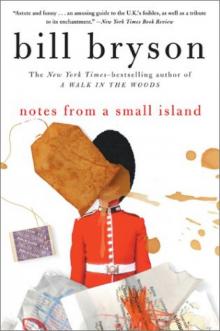 Notes from a Small Island
Notes from a Small Island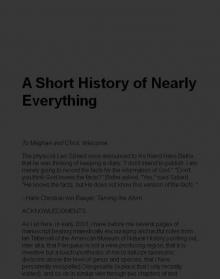 A Short History of Nearly Everything
A Short History of Nearly Everything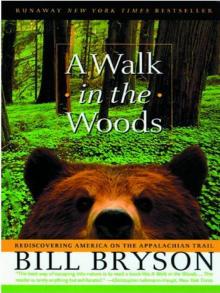 A Walk in the Woods
A Walk in the Woods I'm a Stranger Here Myself
I'm a Stranger Here Myself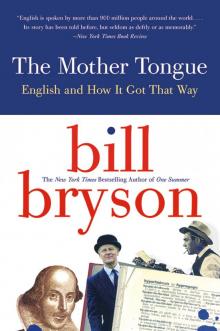 The Mother Tongue
The Mother Tongue Shakespeare
Shakespeare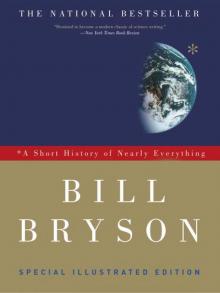 A Short History of Nearly Everything: Special Illustrated Edition
A Short History of Nearly Everything: Special Illustrated Edition The Best American Travel Writing 2016
The Best American Travel Writing 2016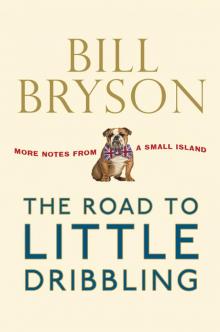 The Road to Little Dribbling
The Road to Little Dribbling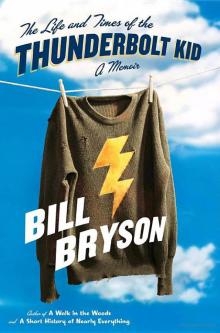 The Life And Times Of The Thunderbolt Kid: A Memoir (v5.0)
The Life And Times Of The Thunderbolt Kid: A Memoir (v5.0)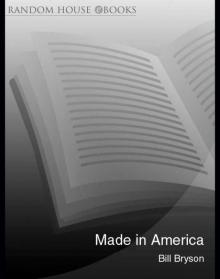 Made In America
Made In America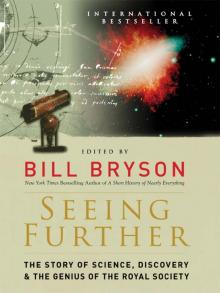 Seeing Further
Seeing Further Shakespeare: The World as Stage
Shakespeare: The World as Stage The Life and Times of the Thunderbolt Kid
The Life and Times of the Thunderbolt Kid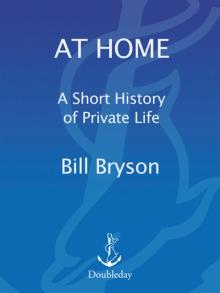 At Home
At Home Bryson's Dictionary For Writers And Editors (v5.0)
Bryson's Dictionary For Writers And Editors (v5.0) Neither Here Nor There
Neither Here Nor There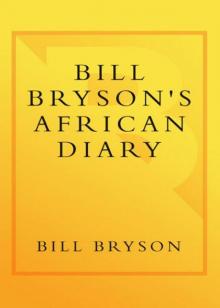 Bill Bryson's African Diary
Bill Bryson's African Diary